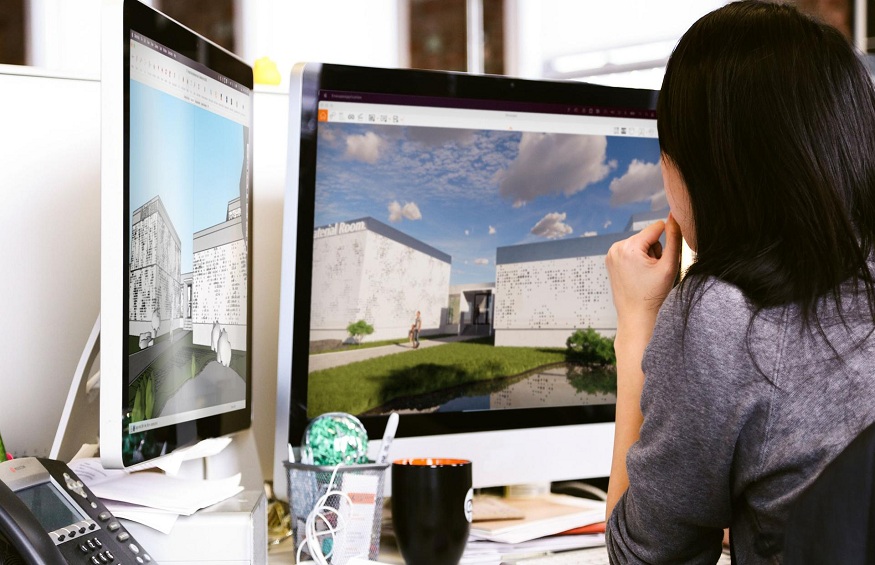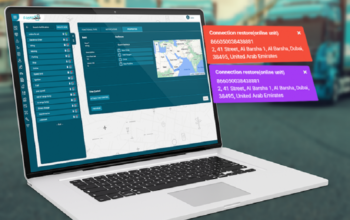Everyone in the architectural world has heard about 3D Rendering in the last several years. It’s one of the most talked-about terms among architects and builders as a service. 3D Rendering is the creation of a visual representation of a three-dimensional object. Both artistic and technical 3D Rendering utilize 3D software to generate visuals that explain or promote a product, service, or idea.
Three-dimensional models are often based on technical drawings or computer-aided design (CAD) layouts. The 3D artist adds finishing touches like lighting and texturing to the completed model. During the last phase of the process, known as “Rendering,” the 3D program compiles all inputs into a 2D picture.
These pictures can be used as single-image still renderings to make animations or in real-time applications like video games. Architectural renderings of buildings, interior renderings of rooms and spaces, and product renderings are just a few examples of the many ways of 3D rendering services.
Techniques of 3D Rendering
Some of the most common approaches to rendering 3D models are outlined here. Each method has benefits and drawbacks, so it’s important to strike a balance.
Scanline Rendering Technique
The scanline method is optimal when speeding up the rendering process is a top priority. As an alternative to traditional pixel-based Rendering, it allows for real-time 3D Modeling and animation utilizing a polygon-by-polygon basis. When this method is used with already calculated lighting, it can work at up to 60 frames per second (fps).
Ray Tracing Technique
The use of ray tracing makes 3D Modeling and rendering simpler. In a 3D environment, it follows the natural light as it “bounces” off different surfaces. It delivers more photorealistic results than the scanline by computing each color algorithmically. The only drawback of the Ray tracing method is that it is sluggish, even slower than the scanline method.
The Ray-Casting Rendering Technique
You should use the ray casting method if your work does not require great visual detail. Line by line and pixel by pixel, it produces an object’s geometry for a project. The main use of this software is 3D modeling simulation in real time. It does a lot to improve computational performance for superior outcomes.
In practice, the benefits of ray tracing and ray casting are commonly combined to achieve the greatest possible degrees of photorealism. Learning how and when to use these strategies will allow you to get the best possible results and finish rendering faster. You can also take the help of to meet your needs in an efficient manner.
Applications of 3D Rendering
Many sectors rely on 3D Rendering, including architecture, video games, advertising, product design, and visual effects for cinema, TV, and animation.
- Renders enable creative professionals in designing and architecture to present their ideas straightforwardly and transparently. Before they are created or produced, they may use a render to assess their concepts, experiment with materials, perform research, and contextualize their designs in the virtual environment.
- 3D Rendering is critical in the entertainment and media sectors for creating story-telling sequences and animations, whether we’re watching a historical drama, animated movie, or an action scene with exotic settings, explosions, or alien species.
- In many sectors, the growth of computer graphics has replaced conventional approaches in recent years. Special effects, for example, are being substituted by visual effects, which means stunt drivers are no longer risking their lives in automobile accidents.
- It is common practice for entrepreneurs to use 3D renderings to visualize prototypes. Since 3D Modeling and Rendering are so adaptable, you can make a 3D render of just about anything. Civil engineers also develop visual experiences using 3D rendering and modeling. It lets them assess and convey real-world designs while providing customers with good civil engineering services.
- In advertising, I would guess that majority of vehicle advertisements are CG. Many old approaches for creating representations, such as scale models, have been substituted in the architectural business by photorealistic photographs to guarantee we can see precisely how something will appear after it’s built.
- Technology has also evolved due to faster procedures, lower prices, and a desire for higher quality outputs. Hardware is more capable than ever; therefore, the transition to 3D Rendering was unavoidable.
Other real-world applications of 3D Rendering are as follows:
- Retail, to demonstrate eCommerce items to online buyers and to develop product prototypes
- Virtual 3D house tours in real estate.
- Architecture and automobile design, where it’s typically more cost-effective than developing blueprints or real-life functioning models of projects
- Engineering, to provide technical diagrams of suggested projects
- Aeronautics
Conclusion
3D Rendering services can change how companies do business and customers live their lives. Having better pictures on your eCommerce site could make your customers happier. Since the economy is becoming more visual, marketers are excited about the cost savings that 3D-generated pictures promise.
Think about using a visualization platform with 3D-rendered photorealistic image features to show off the beauty and usefulness of your product. At the same time, if your company is having trouble getting complex visual information across beautifully, clearly, and cost-effectively, you can improve the customer experience.




